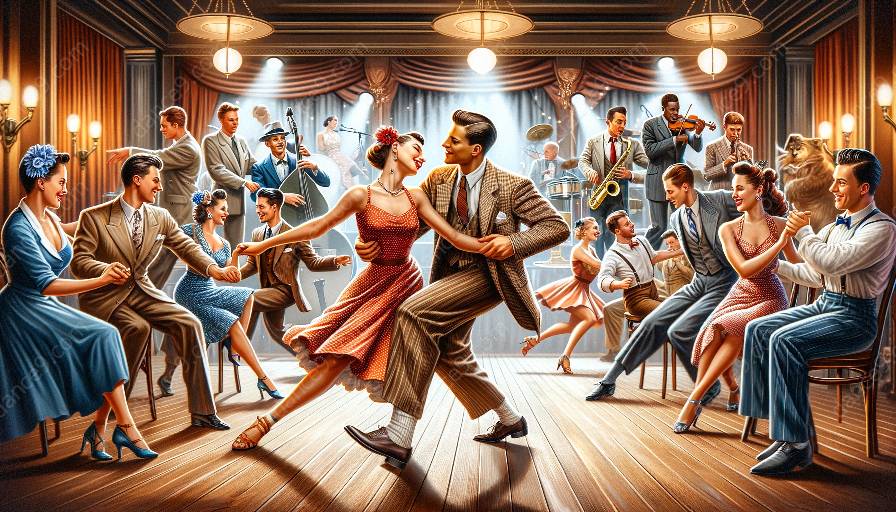Swing dance has had a profound impact on popular culture and media representations, shaping the way dance is viewed and enjoyed. From its significant influence on music, fashion, and social dynamics to its portrayal in film and television, swing dance has left an indelible mark on the collective consciousness. This article aims to explore the rich history, evolution, and influence of swing dance and its implications for dance classes.
The History of Swing Dance
Swing dance emerged in the 1920s and 1930s in African American communities, accompanied by the lively and infectious swing music. It quickly gained popularity and became an integral part of the jazz age. The dance style evolved through various forms such as the Lindy Hop, Jitterbug, and Charleston, and it continued to captivate audiences with its exuberant energy and infectious rhythm.
In the 1930s and 1940s, swing dance became a social phenomenon, transcending racial and cultural barriers. It provided a platform for people to express themselves, connect, and celebrate life through joyful movement. This inclusivity and sense of community contributed to swing dance's enduring appeal and relevance in popular culture.
Influence on Popular Culture
Swing dance had a profound impact on popular culture, shaping the music, fashion, and social dynamics of the time. The vibrant and dynamic nature of the dance style influenced the music industry, giving rise to iconic swing bands and the swing era. This musical influence continues to resonate in contemporary music, inspiring artists and audiences alike.
Furthermore, swing dance revolutionized fashion, with its distinctive style and flair becoming synonymous with the swing era. The glamour and exuberance of swing dance fashion continue to influence modern-day trends, from vintage-inspired clothing to retro-themed events and parties.
In addition to music and fashion, swing dance became a significant social phenomenon, fostering a sense of camaraderie and unity among diverse communities. It provided a space for people to come together, let loose, and experience the joy of dance, transcending societal norms and fostering a spirit of inclusivity.
Media Representations of Swing Dance
Swing dance has been prominently featured in various forms of media, including films, television shows, and commercials. Its infectious energy and visual appeal have made it a popular choice for filmmakers and advertisers seeking to convey a sense of joy, freedom, and connection.
Classic films from the swing era, such as 'Swing Time' and 'Hellzapoppin'', showcased the exuberance and elegance of swing dance, captivating audiences and influencing popular culture. Contemporary films and television shows continue to feature swing dance, portraying its timeless charm and effervescent spirit, thereby perpetuating its enduring popularity.
Impact on Dance Classes
The influence of swing dance on popular culture and media representations has had a significant impact on dance classes. The enduring appeal of swing dance has led to the proliferation of swing dance classes, workshops, and events, catering to individuals eager to learn and experience this iconic dance style.
Moreover, the portrayal of swing dance in media has served to popularize and demystify the dance form, attracting a new generation of enthusiasts to explore and embrace its joyful essence. As a result, swing dance classes have become increasingly accessible and sought after, contributing to the preservation and evolution of this beloved dance tradition.
Conclusion
In conclusion, swing dance has wielded a considerable influence on popular culture and media representations, from its impact on music, fashion, and social dynamics to its portrayal in film and television. This vibrant and exuberant dance style continues to capture the imagination and enthusiasm of audiences, perpetuating its enduring legacy. Its influence on dance classes has further solidified its place in contemporary culture, fostering a sense of community, joy, and connection through the art of movement.













































































